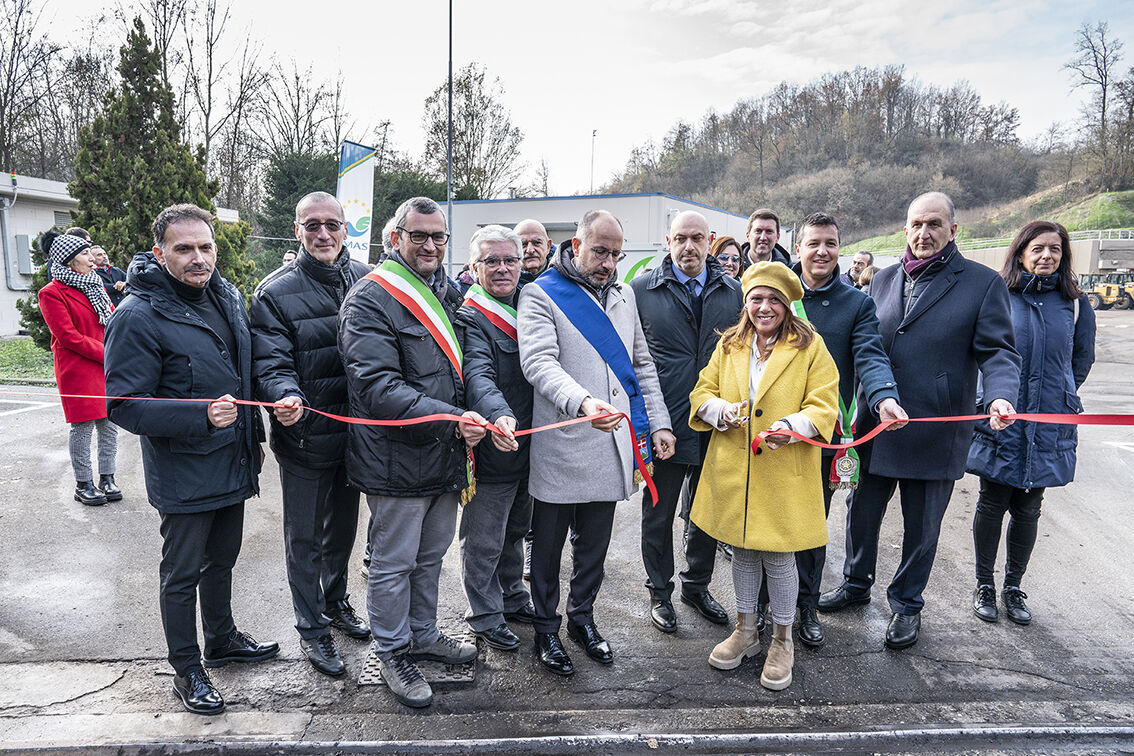Italian urban waste treatment plant engages with Pentair to produce sustainable transport fuel
How Pentair & GAIA SpA are helping to decarbonize the transport sector.
A new Pentair biomethane plant, inaugurated in December 2022, produces biomethane for the Italian urban waste collection and processing treatment plant, GAIA SpA.
GAIA SpA, located in San Damiano d’Asti, Italy, recovers, treats, and disposes of urban waste produced by local municipalities. This organic waste is processed and used as feedstock to produce biogas via anaerobic digestion, which is then upgraded into natural gas grid-quality biomethane.
The resulting digestate is also recovered to produce approximately 20,000 tons[i] of mixed compost annually as a soil improver for nearing 10 km2 of agricultural land[ii].
The anaerobic digestor is capable of processing approximately 70,000 tons[iii] of organic waste a year, allowing the biogas upgrading plant to produce approximately 6 million cubic meters of biomethane. This biomethane is then injected into the gas grid. It is also further liquefied and used as biofuel, an alternative to fossil-based transport fuel, which currently accounts for 25%[1] of greenhouse gas emissions from road transport in the European Union. This greener alternative biofuel is used, amongst other things, to decarbonize heavy freight vehicles.
Overall, GAIA’s organic waste recovery process aids in avoiding approximately 12,000 tons of CO2 emissions every year[iv].
Speaking on behalf of Pentair, Emanuele Zannarini - Sales Manager for Italy Biogas & CO2 Systems, commented: “As a Pentair representative for the Italian market, I take pride in the sustainable solutions we offer to our esteemed clients. Our efforts towards positive change for the environment make me proud of what we do.”
[1] Questions and Answers: Revision of the CO2 emission standards for Heavy-Duty Vehicles, European Commission, 14th Feb 2023 Read More
[i] The estimated annual production of compost comes from the final revamping project of the plant, operating at the maximum capacity of 70,000 t/year of organic waste and 20,000 t/year of mowing/pruning waste. The actual production may be lower, due to the high presence of non-compostable materials that leads to an overproduction of waste and a reduction of compost, but as a maximum production estimate the 20,000 ton/y remains valid. The soil surface that can be fertilized is calculated according to the indication given regarding the dosages of compost (normally 20 t/hectare each year). Depending on the specific crops, different dosages can be recommended, 20 t / hectare is an indication universally used in the compost production sector.ii The soil surface that can be fertilized is calculated according to the indication given regarding the dosages of compost (normally 20 t/hectare each year). Depending on the specific crops, different dosages can be recommended, 20 t / hectare is an indication universally used in the compost production sector.
[iii] 90,000 t/year are treated by the plant as a whole, but only 70-75,000 feed the digesters directly. The production of biomethane is also estimated in the final project (70,000 t/year x 150 cubic meters biogas production/ton x 58% methane average content).
[iv] It is estimated that each ton of compost is equivalent to the sequestration of 78-130 kg of CO2 (Read More). That means, 20,000 tons of compost production per year is equivalent to 2,000-2,600 tons of CO2 savings per year. The rest is given by the CO2 savings due to the actual use of the produced bioCH4 instead of the fossil one; also in this case, it is an estimated calculation: the combustion of 6,000,000 cubic meters of natural gas involves the emission of about 12,000 tons of CO2 (1.95 - 2 kg of CO2 / Std mc of NG); the sustainability calculation applied to our plant attests to a CO2 saving of at least 80% compared to fossil NG (minimum 75% by law), obtaining about 9,500 tons/year of CO2 saved. (overall: 2,600+9,500 = approx. 12,000 tons/year CO2 savings).
